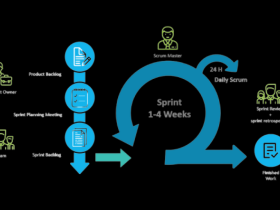Software development is a complex process that requires careful planning, execution, and monitoring to ensure a successful outcome. The Software Development Lifecycle (SDLC) is a methodology that outlines the process of software development, from initial planning to final delivery. The SDLC consists of seven distinct phases, each with its own set of activities and deliverables. In this comprehensive guide, we will explore each of these phases in detail.
1. Planning:
The planning phase is the initial stage of the SDLC. During this phase, the project team identifies the goals and objectives of the software project, defines the project scope, and creates a high-level plan for the project. This plan outlines the project’s timeline, budget, and resource requirements.
The planning phase involves several key activities, including gathering requirements, identifying stakeholders, creating a project plan, and conducting a feasibility study. The feasibility study determines whether the project is technically and financially feasible and if it aligns with the organization’s strategic goals.
2. Requirements Gathering:
The requirements-gathering phase involves collecting and documenting the functional and non-functional requirements of the software system. These requirements describe the desired functionality, user interface, performance, security, and other aspects of the software.
During this phase, the project team works closely with stakeholders, end-users, and subject matter experts to ensure that all requirements are captured accurately. The requirements are typically documented in a requirements specification document, which serves as the foundation for software design and development.
3. Design:
The design phase involves transforming the requirements specification into a detailed software design. The software design describes the system’s architecture, user interface, data storage, and processing logic.
The design phase involves several key activities, including creating a high-level design, creating a detailed design, and reviewing the design with stakeholders. The design phase also involves selecting the appropriate development tools, frameworks, and libraries to be used in the project.
4. Development:
The development phase involves writing the code that implements the software design. During this phase, the project team creates the software components, integrates them into a working system, and tests the system for defects and performance issues.
The development phase involves several key activities, including writing code, testing code, fixing defects, and integrating components into the software system. The project team must also ensure that the software is scalable, maintainable, and meets the performance requirements.
5. Testing:
The testing phase involves validating the software system to ensure that it meets the specified requirements and is free of defects. The testing phase involves several different types of testing, including unit testing, integration testing, system testing, and acceptance testing.
During the testing phase, the project team creates test cases and test scripts to validate the system’s functionality and performance. The project team also identifies and fixes any defects discovered during testing.
6. Deployment:
The deployment phase involves delivering the software system to the end users or customers. This phase includes activities such as installation, configuration, data migration, and user training.
During the deployment phase, the project team works closely with the end users to ensure that the software is installed and configured correctly. The project team also provides training and support to ensure that the end users can use the software effectively.
7. Maintenance:
The maintenance phase involves ongoing support and maintenance of the software system. This phase includes activities such as bug fixes, updates, and enhancements.
During the maintenance phase, the project team continues to monitor the system for defects and performance issues. The project team also makes updates and enhancements to the system based on user feedback and changing business requirements.
Conclusion:
The Software Development Lifecycle (SDLC) is a comprehensive methodology that outlines the process of software development, from initial planning to final delivery. The SDLC consists of seven distinct phases, each with its own set of activities and deliverables. By following the SDLC, organizations can ensure that their








Leave a Reply